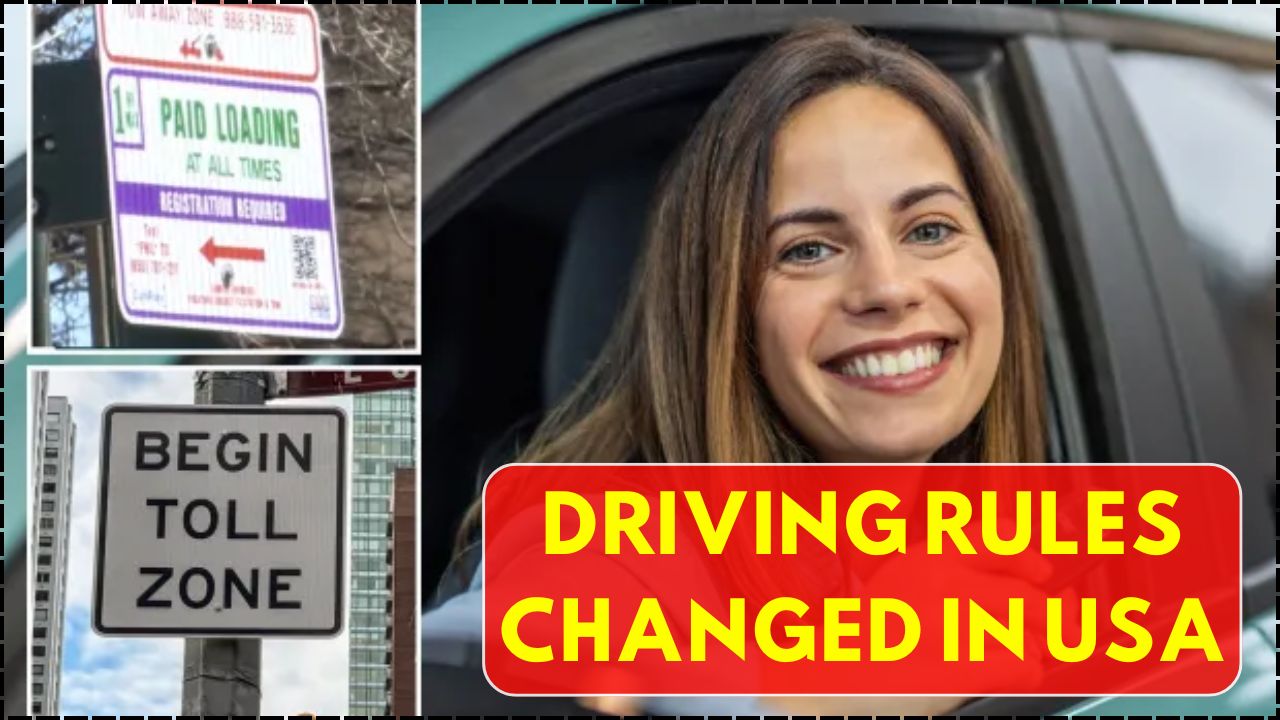
In 2025, drivers across the United States are facing a wave of new regulations and traffic laws updated by the Department of Transportation (USDOT). As driving rules change in the USA, several states have implemented revised measures targeting road safety, environmental responsibility, and modern transportation needs. Whether you’re a commuter, a truck driver, or an occasional motorist, staying aware of these updates is essential to avoid penalties and maintain compliance.
This detailed breakdown explores all the key rule changes, their implications, and what actions drivers should take to stay informed and safe on the road.
Table of Contents
Driving Rules Changed in USA in 2025
States such as California, New York, and Texas have introduced rigorous restrictions on distracted driving. These changes are aimed at curbing accidents caused by device use.
Key Highlights:
- Holding a phone is illegal, even when the vehicle is idle at traffic signals.
- Interacting with the dashboard is limited to a single tap or swipe for apps like maps or music.
- Hands-free use remains permitted, but you must set everything before moving.
- First violations may cost up to $250, while repeat offenses attract points on your license and increased insurance premiums.
Overview
| Area of Law | States Affected | Key Updates | Potential Penalties |
|---|---|---|---|
| Mobile Phone Use | CA, NY, TX | Strict no-handheld policy, even at signals | $250+ fines, license points |
| Emissions & Vehicle Testing | OR, WA, CO | Annual emissions testing, zero-emission zones | $200–$1,000 |
| Speed Limits | IL, NV, MA | Speed reductions in urban/residential zones | Camera tickets, mailed fines |
| Teen Driver Rules | FL, OH | Longer permit periods, driving curfews | License delay, fine |
| EV Lane Laws | CA, AZ | EV-only lanes, priority charging access | Up to $500 fines |
Tighter Emissions Standards and Vehicle Inspection Rules
With rising environmental concerns, states like Oregon, Washington, and Colorado have stepped up their vehicle inspection and emissions regulations.
What’s Changing?
- All gas and diesel vehicles older than five years must pass annual emissions tests.
- Lowered emissions thresholds mean older vehicles may need updates or risk penalties.
- Cities like Portland and Denver are now enforcing zero-emission zones, restricting access to only electric or hybrid vehicles.
- Violations of these rules can cost anywhere from $200 to $1,000, depending on the emission excess.
This shift aims to encourage greener transportation and align with broader climate goals.
Adjusted Speed Limits
Several U.S. states have modified their speed limits to reflect evolving traffic conditions and safety data. Along with these changes, automated enforcement cameras are being introduced in more regions.
Speed Limit Revisions:
| State | Old Limit | New Limit |
|---|---|---|
| Illinois (Urban Zones) | 30 mph | 25 mph |
| Nevada (Rural Highways) | 70 mph | 75 mph |
| Massachusetts (Residential Areas) | 35 mph | 30 mph |
Additional Enforcement Measures:
- Speed cameras have been deployed in cities such as Boston, San Diego, and Houston.
- Tickets are automatically issued and mailed — no traffic stop needed.
Staying updated on your local limits is now more important than ever, especially with automated systems in place.
Revised Teen Driving and Learner Permit Laws
Due to a noticeable uptick in teen driver accidents, states like Florida and Ohio are implementing tighter restrictions on how and when teens can drive.
New Requirements:
- Learner’s permit duration has been doubled from 6 to 12 months.
- A mandatory defensive driving course is now required before a full license is granted.
- Drivers under 18 must avoid nighttime driving (11 PM to 5 AM) unless accompanied by an adult or for school/work.
These changes are designed to ensure that young drivers build experience gradually and develop safer habits.
Electric Vehicle (EV) Lanes and New Privileges
With electric vehicles becoming more common, states such as California and Arizona are rolling out new laws to support their use while also improving traffic flow.
New EV Laws Include:
- EV-only lanes during rush hours to promote cleaner commutes.
- Priority access to charging stations, and penalties for blocking these spots if you’re not driving an EV.
- Fines for non-compliance can be as high as $500.
These changes are part of a broader push to modernize road infrastructure and promote clean energy.
How to Stay Compliant with the 2025 Driving Rules
To help avoid fines, delays, or license complications, drivers should actively take steps to understand the new regulations.
Recommended Actions:
- Visit your state’s DMV website to read region-specific updates.
- Ensure your emissions test and vehicle inspection are current.
- Set up your GPS and music before starting the engine.
- Avoid using your phone unless it’s hands-free and voice-controlled.
- Enroll in online refresher or defensive driving courses if available in your state.
- Update your insurance papers and make sure your driver’s license is valid.
Taking proactive steps now will help you stay ahead of these changes and avoid penalties.
FAQs
Q1: Are hands-free devices still allowed while driving in the USA in 2025?
Ans: Yes, hands-free devices are still permitted, but manual interaction is limited.
Q2. How much is the fine for parking a non-EV vehicle in an EV charging slot?
Ans: You may be fined up to $500 depending on the state.
Q3. What is the new learner’s permit period for teens in Florida and Ohio?
Ans: It has been extended to 12 months from the previous 6 months.








